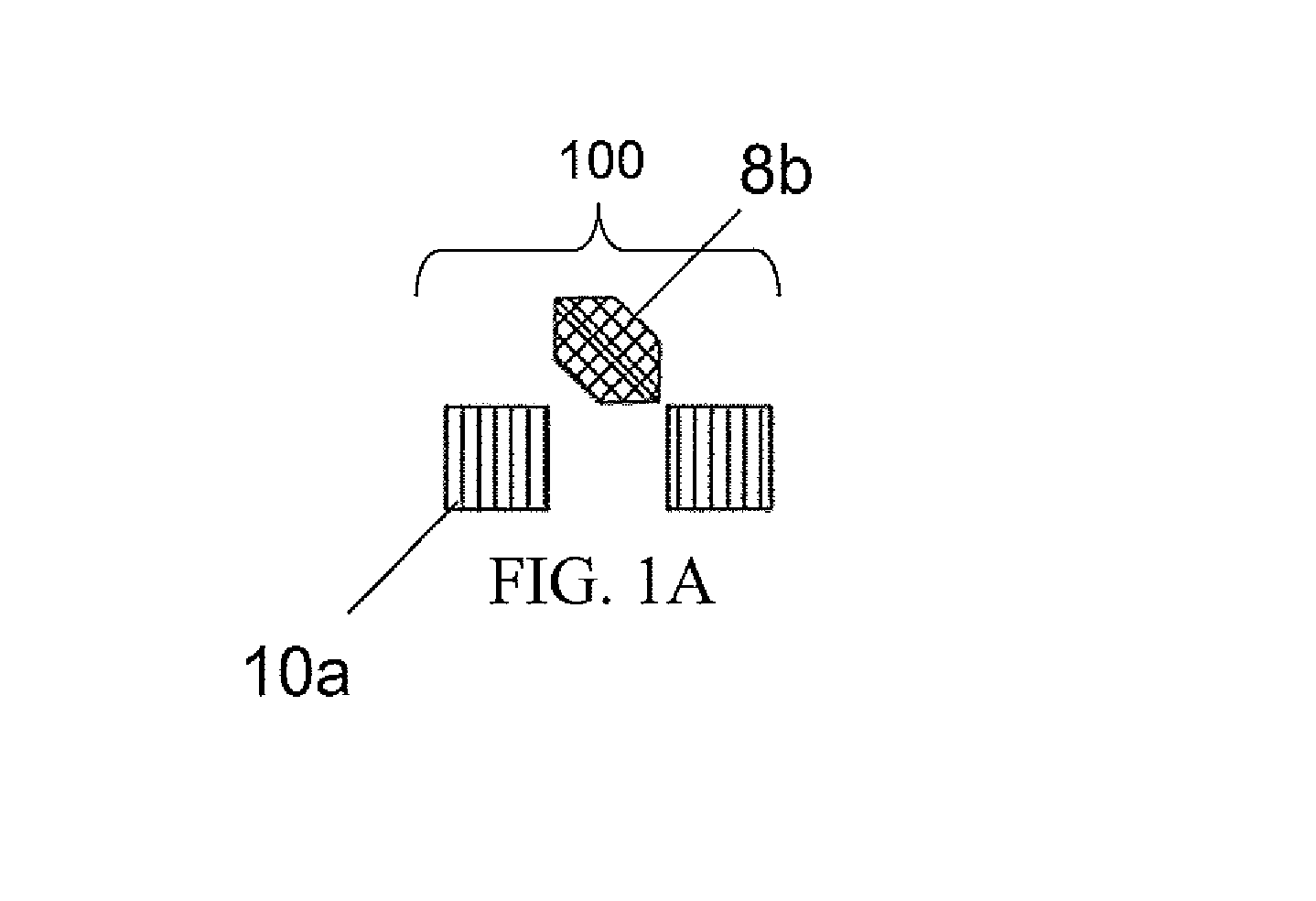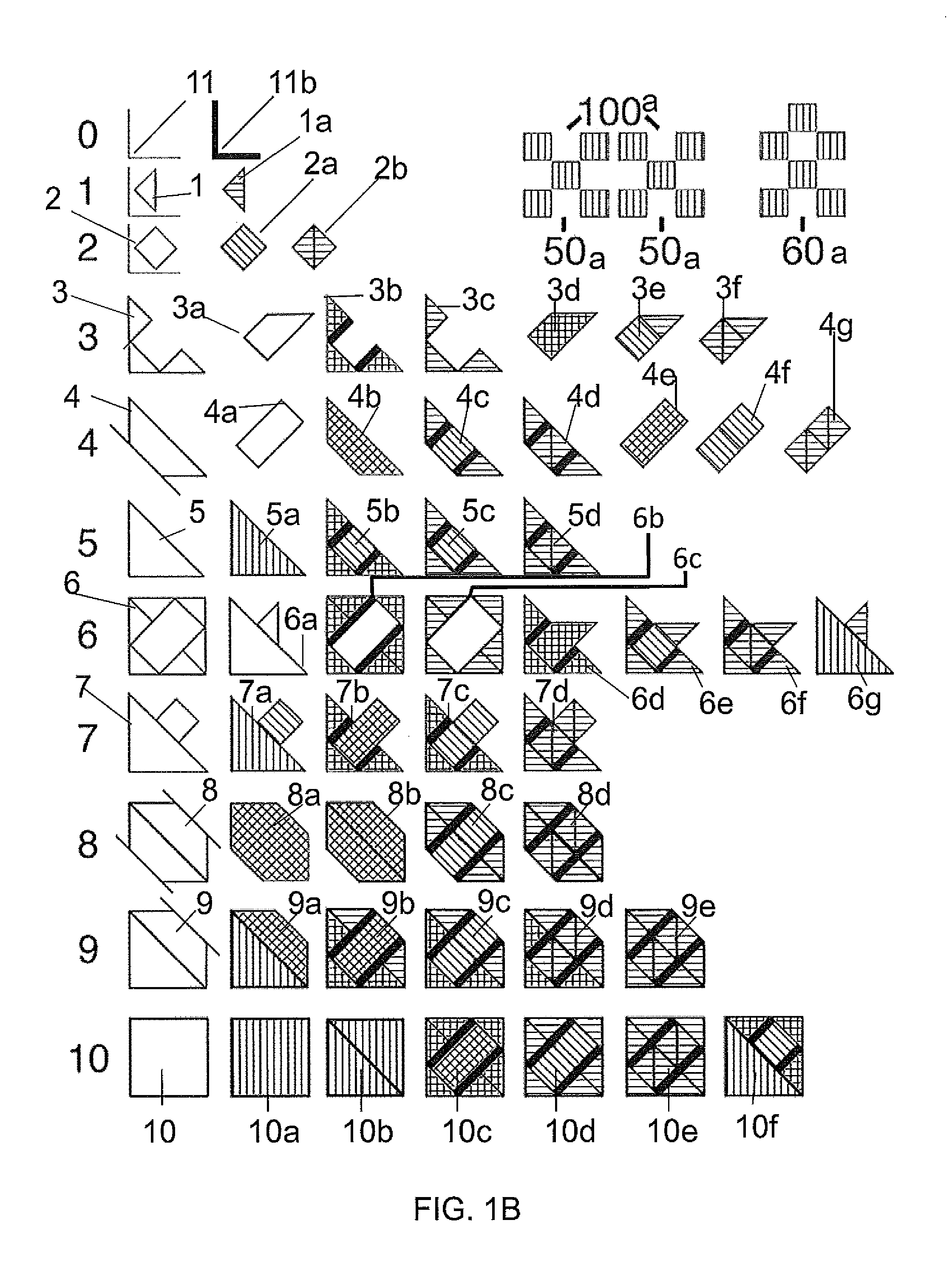Methods for teaching reading and math skills to individuals with dyslexia, dyscalculia, and other neurological impairments
a technology for dyslexia applied in the field of methods for teaching reading and math skills to individuals with dyslexia, dyscalculia, and other neurological impairments, can solve the problems of many dyslexic children and teens having problems in some areas of math, math tasks so difficult, and math gifts never discovered
- Summary
- Abstract
- Description
- Claims
- Application Information
AI Technical Summary
Benefits of technology
Problems solved by technology
Method used
Image
Examples
Embodiment Construction
[0093]The geometrical shapes and methods of use are referred to herein as SHAPE MATH®. There examples presented in this application are for illustrative purposes and are not meant to limit the invention.
SHAPE MATH® Basic Introduction
[0094]With SHAPE MATH®, basic math operations can be calculated by visualizing and manipulating shapes that each represent a quantity. Instead of adding abstract symbols which is hard for a dyscalculic, a SHAPE MATH® user can visualize the combination of various shapes. It is a system that displays in a highly visual format and that utilizes dyslexic visual mechanical acuity and dyslexic kinesthetic awareness.
[0095]FIG. 1A is an example of the number 28 when expressed with SHAPE MATH® symbols. These symbols will be described in more detail later in the document.
[0096]This section demonstrates the basic principles of SHAPE MATH® by introducing the one, two, three and five shapes and demonstrating how they can be combined to make a ten shape. These numbers...
PUM
 Login to View More
Login to View More Abstract
Description
Claims
Application Information
 Login to View More
Login to View More - R&D
- Intellectual Property
- Life Sciences
- Materials
- Tech Scout
- Unparalleled Data Quality
- Higher Quality Content
- 60% Fewer Hallucinations
Browse by: Latest US Patents, China's latest patents, Technical Efficacy Thesaurus, Application Domain, Technology Topic, Popular Technical Reports.
© 2025 PatSnap. All rights reserved.Legal|Privacy policy|Modern Slavery Act Transparency Statement|Sitemap|About US| Contact US: help@patsnap.com



